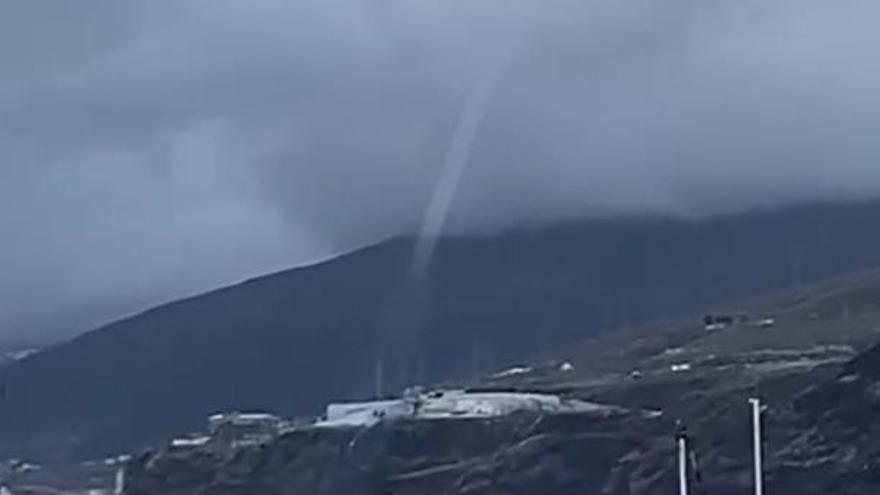
Last Wednesday, January 17, from Radazul Sea Club, on the northeast coast of Tenerifeimpressive images of a marine sleeve were captured.
The club shared these images on its Facebook profile.
According to the article “Waterspouts and their climate in the Canary Islands” by Miguel Hernández Martínez de la Peña, Cristina Cardós Fernández, Ernesto Barrera Rodríguez, Ricardo Sanz Barajas, waterspouts can be briefly defined as tornadoes over water. These consist of a rapidly rotating column of air that extends from a cumuliform cloud to the water surface, generally over the sea.
The same text indicates that the duration of these phenomena usually varies between 5 and 10 minutes, with a travel speed that ranges between 5 and 20 kilometers per hour.
waterspouts
Waterspouts are fmeteorological phenomena that They form on bodies of water, like oceans or lakes. They are similar to tornadoes, but develop over water. The formation of a waterspout usually involves the interaction between specific meteorological conditions and the marine environment. Here are some key factors that contribute to the formation of waterspouts:
- Unstable atmospheric conditions: For a waterspout to form, an unstable atmosphere is required, meaning there are abrupt changes in temperature and humidity as you rise in the atmosphere. These unstable conditions can facilitate the development of storms.
It is important to note that waterspouts can vary in size and strength. Some are weak and short-lived, while others can be more intense and persistent.
- Presence of storms or convective clouds: Waterspouts often form in association with thunderstorms or convective clouds. These conditions favor the creation of upward currents of air.
- Interaction between cold and hot air: The interaction between cold and warm air masses over the water surface can generate vortices and rotation. This can occur when a cold air mass moves over warmer water, inducing a temperature gradient and creating conditions conducive to rotation.
- Presence of a rotating air column: For the rotation to intensify and form a waterspout, there needs to be a rotating column of air. This rotation can be generated due to the convergence of wind at different levels of the atmosphere.
- Influence of relief: In some cases, the relief of the seabed can play an important role in the formation of waterspouts. When waters are shallow near the coast, this can favor the rotation and development of waterspouts.
It’s important pointing that Waterspouts can vary in size and strength. Some are weak and short-lived, while others can be more intense and persistent. Waterspouts are fascinating phenomena, but they can also pose dangers, especially if they approach the coast.
What is a waterspout?
Waterspouts can be dangerous, especially if they approach the coast or populated areas. Although they are not as large as some tornadoes that form over land, they can still pose risks to shipping and coastal communities. Here are some things to consider about the danger of waterspouts:
- Damage to vessels: Waterspouts can be dangerous for boats, as they can generate strong and turbulent winds in the area where they form. The updrafts and downdrafts associated with the waterspout can also affect nearby vessels.
- Impact on the coast: If a waterspout reaches the coast, it can cause damage similar to tornadoes on land. They can lift objects, damage structures, and pose a danger to people in their path.
- Variability in intensity: The intensity of waterspouts can vary widely. Some are weak and short-lived, while others may be stronger and more persistent. Stronger waterspouts can be more destructive.
- Difficulty in prediction: Although meteorologists have made advances in the ability to forecast certain weather phenomena, waterspouts can be difficult to predict accurately. This means warning and preparation can be challenging.
It is important to follow the weather warnings and pay attention to weather conditions, especially in areas prone to waterspout formation. Coastal communities often have emergency plans in case of adverse weather events, and it is essential to follow the recommendations of local authorities to stay safe.
















